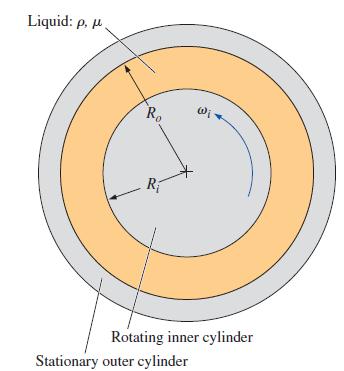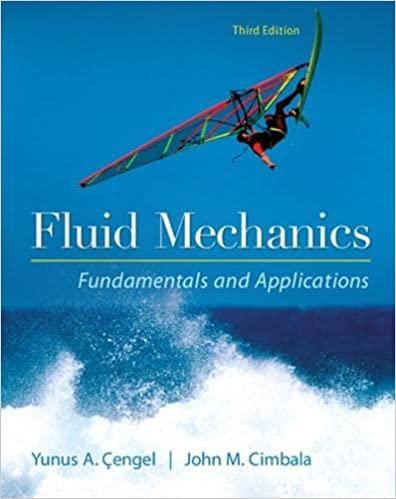Analyze and discuss two limiting cases of Prob. 996: (a) The gap is very small. Show that
Question:
Analyze and discuss two limiting cases of Prob. 9–96:
(a) The gap is very small. Show that the velocity profile, approaches linear from the outer cylinder wall to the inner cylinder wall. In other words, for a very tiny gap the velocity profile reduces to that of simple two-dimensional Couette flow. (Define y = Ro – r, h = gap thickness = Ro – Ri, and V = speed of the “upper plate” 5 Riωi.)
(b) The outer cylinder radius approaches infinity, while the inner cylinder radius is very small. What kind of flow does this approach?
Data from Problem 96
An incompressible Newtonian liquid is confined between two concentric circular cylinders of infinite length— a solid inner cylinder of radius Ri and a hollow, stationary outer cylinder of radius Ro (Fig. P9–96; the z-axis is out of the page). The inner cylinder rotates at angular velocity ωi. The flow is steady, laminar, and two-dimensional in the rθ-plane. The flow is also rotationally symmetric, meaning that nothing is a function of coordinate θ (uθ and P are functions of radius r only). The flow is also circular, meaning that velocity component ur = 0 everywhere. Generate an exact expression for velocity component uθ as a function of radius r and the other parameters in the problem. You may ignore gravity.
FIGURE P9–96

Step by Step Answer:

Fluid Mechanics Fundamentals And Applications
ISBN: 9780073380322
3rd Edition
Authors: Yunus Cengel, John Cimbala





